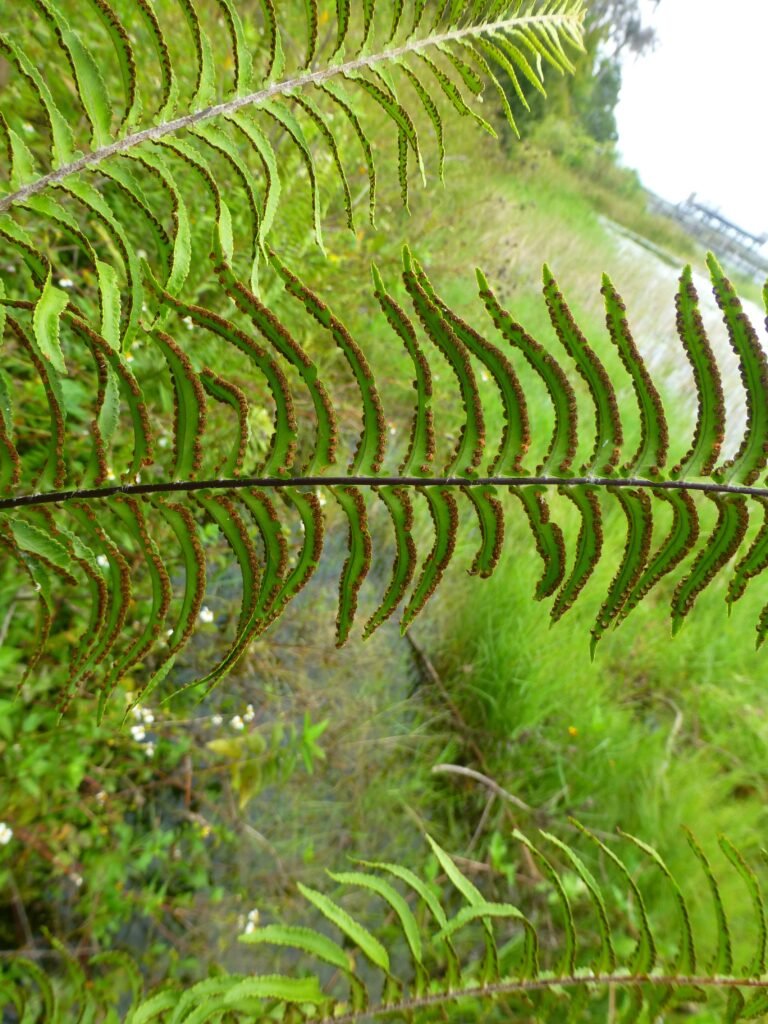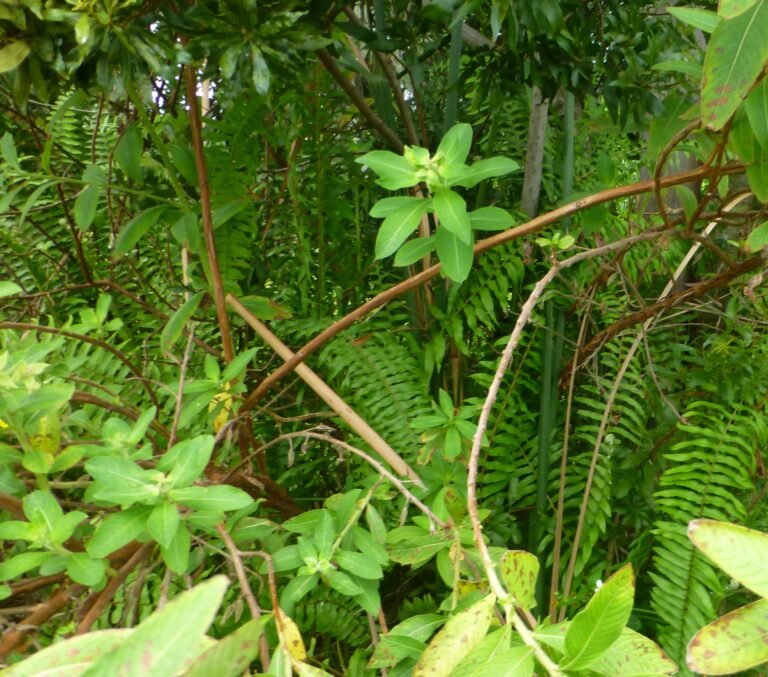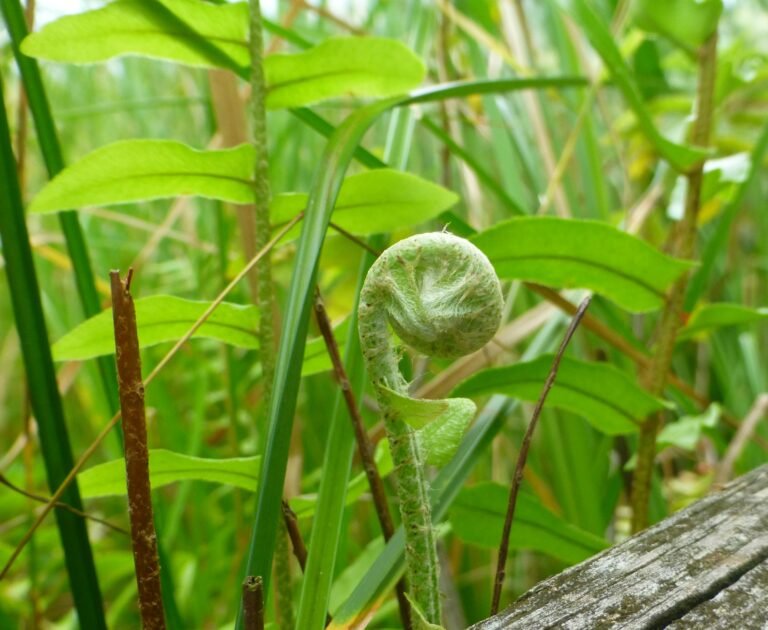
Nephrolepis brownii
(Asian Sword Fern)

Common Names, Latin Name, and Family
The only common name in the United States is Asian sword fern.
In Australia it is referred to as the rough sword fern.
The Latin name is Nephrolepis brownii.
Asian sword fern is in the Nephrolepidaceae, sword fern, family.
Form
Asian sword fern is a non-native, perennial, fern that spreads by underground runners. Stems appear along these runners and can come up anywhere along them even in the tiniest of cracks in wood or concrete.
It grows to a height of about 5 feet.
It is considered an aggressive invasive exotic in Florida.
Leaves
Fronds (leaf): The fronds of Asian sword fern are usually 3 to 5 feet in length.
Petiole (leaf stalk): Petiole length ranges from 1 1/2 inches to 17 inches in length.
Rachis (leaf stem): The rachis can range in color from yellowish to grayish brown and has a hairy appearance.
Blade (leaf blade): The leaf blades are pinnate, and linear – lanceolate in shape. They are 20 to 40 inches long and 2 3/4 to 8 inches wide. The leaf blade is usually wider at the middle.
Pinnae (leaflets): The leaflets are linear oblong to narrowly elliptic. They are 1 1/2 to 4 3/4 inches long. The margins may be singly or double toothed. The marginal teeth may be sharp or blunt.

Spores
The spores mature in mid to late summer and are found in the sori.
The sori is the structure on the leaf that contains the spores. A sporangia is a covering over the sori that protect the spores as they mature.
On the Asian sword fern the sori are located along the very edge of the leaf.


Habitat
Asian sword fern is found occurring in disturbed sites, along canals, roadsides, open waste places and landscapes.
Native Range
In Florida it can be found from Flagler county southward into the Keys.
“It was first reported in Florida in Dade County in 1975 (Gillis & Proctor), but probably arrived in the state as early as the 1940’s. It is listed by the Exotic Pest Plant Council as one of the state’s Category II pest plants, which means that it has the potential to invade and disrupt the state’s native plant communities”. [1]
Landscape Use
I honestly can’t find a good reason to have this in your landscape when there are so many native alternatives that are more well behaved.
It is very aggressive, and unlike tuberous sword fern, is much harder to irradicate because the plants will take root in the tightest of spots where it’s almost impossible to remove them. They will appear in the tiniest of cracks along decking or sidewalks and in the process of removing them many spores are dropped so it’s an ongoing maintenance issue until you can actually irradicate it.

Wildlife Use
Ferns of all types provide hiding, and foraging, places for a variety of wildlife such as frogs, lizards, damsel flies, and dragonflies.
Human Use
I have not found any evidence that Asian sword fern fiddleheads are edible.
PLEASE do not eat them.
Too many mature fronds of any fern can cause your livestock to become very will so if find ferns coming up in your pasture remove it asap.

Propagation
My suggestion, once again, is to NOT propagate this fern unless you want a maintenance nightmare.
Check out my fern section and see what native fern candidates you could use in your landscape instead. You can also get Gil Nelson’s book Ferns of Florida! You might be surprised that you may have some native ferns already using his book to identify them.
Further Reading
The United States Forest Service has a great article called Fern Structure if you’re interested in learning more about ferns. Check out –
https://www.fs.usda.gov/wildflowers/beauty/ferns/structure.shtml#:~:text=Sori%20(singular:%20sorus)%20are,indusia%20(singular:%20indusium).
The University of Florida has a great article called Natural Area Weeds: Distinguishing Native and
Non-Native “Boston Ferns” and “Sword Ferns”
(Nephrolepis spp.)
https://ufdcimages.uflib.ufl.edu/IR/00/00/41/78/00001/AG12000.pdf
Ferns of Florida: A Reference and Field Guide by Gil Nelson available on Amazon.